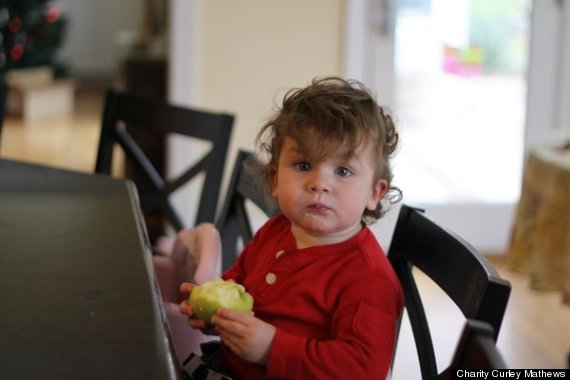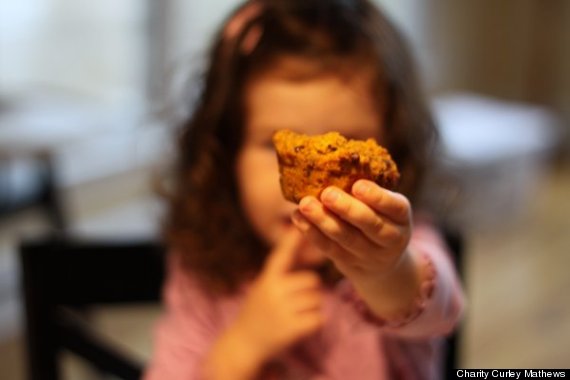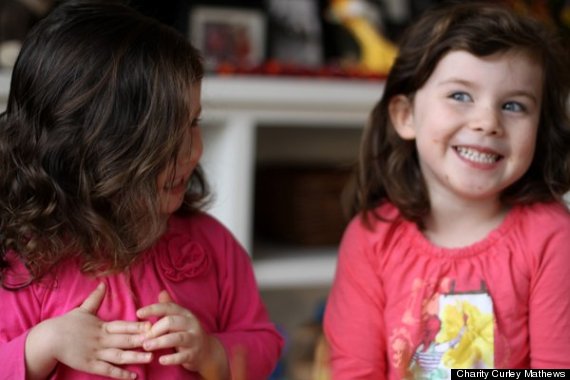Ever since the first of our three children were born, I've been trying to uncover the secret sauce that turns babies, toddlers, preschoolers and even their older counterparts into tiny people who enjoy eating real food. People who are open to trying new flavors and eating vegetables, fresh fruit and whole foods like it's no big thing. Less processed food, more homemade but not too much of either one. To learn how to sit, savor and appreciate good food. After four years of feeding babies, reading books, interviewing everyone and two years of blogging about it, I've figured a few things out. Not everything, but some tidbits are good enough to share and this is the biggest one: The whole thing is only half recipes; the other half is behavior. If you're looking for a new strategy for your family this year, here are the food rules that work for us:
1. Everyone (over the age of 2) eats the same meal. No special requests, no substitutes for anyone who has all of her teeth. I do try to be fair (and stack the deck in favor of success) by adding a couple of choices and also paying attention to each person's favorite ingredients so there's always something for everyone in each meal.

2. Add spinach to everything. Eggs, brownies, I'll make anything "Florentine." It's not sneaky, because I tell the kids it's going in. I'm just looking for new angles for getting more of the good stuff into those tiny bodies. Ditto for wheat germ, flaxseed and chia seeds. Also, we eat whole wheat everything: pasta, bread, pitas. The kids don't know any different and it's so much better for them.
3. Make it fun. Inspired by French Kids Eat Everything, we have tons of pretty little plates and bowls, special spoons and sometimes splurge on fancy paper napkins. There are parfaits and tea parties regularly. My goal is to make mealtimes enjoyable so the kids associate eating real food with pleasure. It's working.
4. Start with small portions. I give the kids only a bite or two of each thing and whoever wants more, gets more. This helps kids figure out when they're actually full rather than me coaxing them into "just one more bite" or worse, eating until their plates are empty from here on out.

5. Serve new foods with flair. We often use the fancy little bowls for new foods: I give the kids one bite in a special dish. Then I use an idea from the brilliant new book, It's Not About the Broccoli. The kids become critics and give a thumbs up, thumbs in the middle or thumbs down. And if they give a thumbs down verdict, I'll say, "That's OK. You can try it again another time and maybe you'll like it better then." Planting the seed...
6. We cook all the time. Since I only work part-time, this works for us but any family could create a cooking culture by doing weekly dinners, big weekend breakfasts and so on. I cook breakfast, lunch and dinner almost every day; the kids see me doing it and right there they're learning a lesson that real food is a priority for our family. Plus, it's fun to let them help and that's another lesson. My goal is for each person to have a dozen dishes they can make before they leave this house. We've got a while, which we'll probably need...
7. The table is a stress-free zone. Toddlers dumping their plates notwithstanding, the dinner table isn't stressful because we're not battling the kids over who eats what. The food is there and manners are encouraged but no one is yelling, or prodding. We're either sitting, eating or talking. Sometimes singing. If this isn't possible, whoever is having a hard time will be excused along with mom or dad and welcome to return when he or she is feeling more cooperative.

8. Homemade is better than processed. Especially when it comes to snack foods, it's easy to either give the kids real food -- sliced cucumbers, dried cranberries, chunks of cheese -- or make our own versions of crackers, fruit leather, DIY "Nutrigrain" bars and so on. Every time you can make something in your own kitchen, it'll be fresher, purer and almost always healthier.
9. Two snacks, maximum. Because little bodies burn through their calories in the day, I like to give a mid-morning and a mid-afternoon snack to avoid meltdowns. But constant eating is a big problem these days and I don't want the kids to learn that habit. In fact, for the afternoon snack I like to stick to fruit and it can be as simple as apple slices or as sweet as bananas and strawberries on a skewer.
10. The kids drink water and milk, period. Once juice and soda are off the table (literally and figuratively), it's not even something to fight about. Our kids have two choices for drinks, they like both of them and best of all -- they're both healthy options.
Food is such a huge part of our lives that I can't help thinking about it, learning about it, and yep, writing about it. It's bigger than just our family, though. Food has huge implications for health, happiness, even our country's financial well being. With obesity declared an "epidemic," diabetes affecting more Americans than ever and the first ever generation of Americans to have shorter lifespans than their parents, Michael Pollan said "cooking might be the most important factor in fixing our public health crisis. It's the single most important thing you can do for your health." I would add it's one of the most important things that we can teach our kids.

Also on HuffPost:
